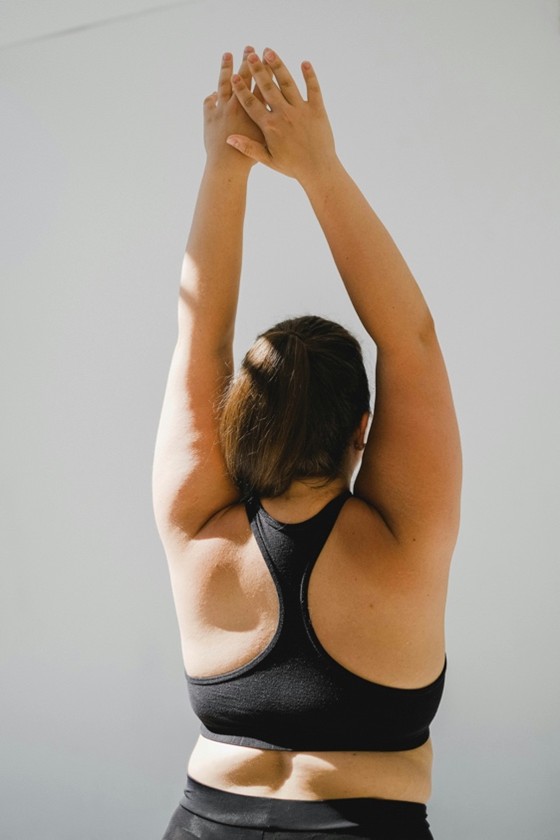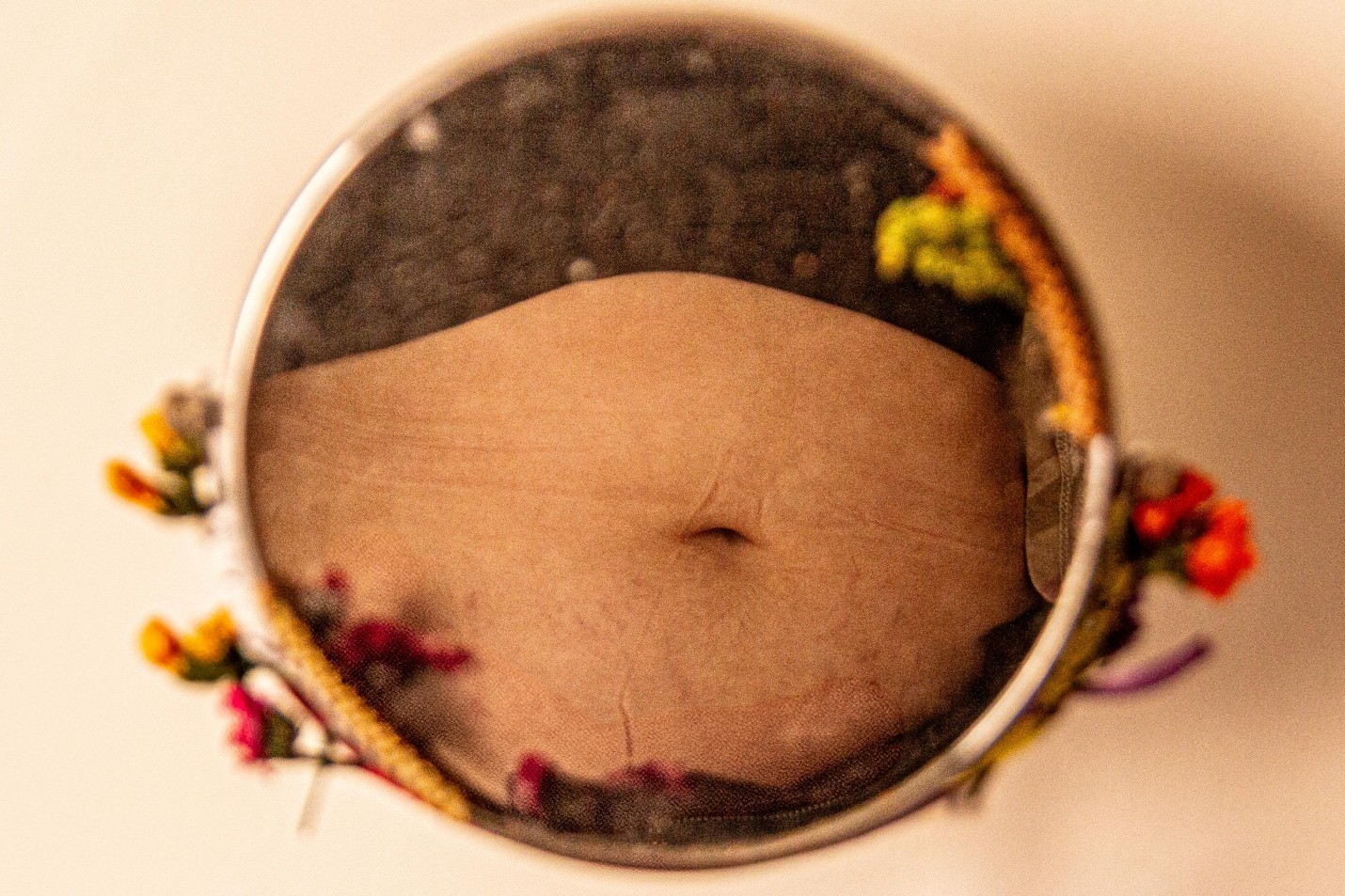You pull on the same jeans you wore last week. Same body. Same mirror. Different day. Suddenly they feel wrong, too tight, too loud, too much. The thought flashes: Did I change overnight, or did my mood change the way I’m seeing myself?
If you’ve caught yourself feeling bigger with no obvious reason, you’re not losing the plot. You’re meeting a very human quirk of body image: when mood dips, perception drifts.
Perception vs. Reality (And the Inner Camera)
Most days, your body isn’t changing dramatically from one morning to the next. What does change, sometimes hour to hour, is the lens you’re looking through. Mood, stress, sleep, hormones, and the social context you’re walking into can tilt your ‘inner camera.’ On steady days, that lens is neutral. On wobbly days, it zooms, shadows, and distorts.
Here’s why that matters: if you chase a fix for a perception problem, you feed the bodyshame that’s already making the day heavy. You end up micromanaging food, clothes, mirrors, and plans to soothe discomfort that started in your mind and nervous system, not in your measurements.
‘Your body isn’t betraying you. Your nervous system is asking for steadiness.’
Why You’re Feeling Bigger: Mood Distorts Body Image

Let’s keep the psychology simple and practical.
Attention bias. Low mood turns your brain into a flaw-finder. Lighting that never bothered you suddenly feels harsh. A waistband you didn’t notice now reads like a verdict. Your attention locks onto whatever confirms the story.
Interoception noise. Interoception is your sense of inner body signals—breath, heartbeat, fullness, tension. Poor sleep, saltier food, hormones, a tough conversation, or anxious breathing can create sensations that feel like size: puffiness, tightness, heaviness. The outside didn’t change; the inside got louder.
Cognitive distortions. When mood dips, thinking swings:
- Magnification: ‘This top looks awful, so everything does.’
- All-or-Nothing: ‘If I don’t look great, I look terrible.’
- Mind-Reading: ‘Everyone can see I gained weight,’ even when no one has said a word.
- Mirror habits. Micro-checking, zooming in on one area, standing under down-lighting, or using your camera as a magnifying glass, tiny choices that train your brain to see threat. They turn a tool into a critic. That’s mirror checking, not self-care.
The Body – Mood Loop (And How It Snowballs)
Here’s the spiral many of us know by heart:
Low mood → harsher self–talk → protective behaviours (baggy clothes, cancel plans, skip photos) → less positive feedback from life → even lower mood.
It makes sense. Your system is trying to keep you safe. The trouble is, protection shrinks your world and leaves you alone with your most critical narrator. The good news: you don’t need a grand overhaul to turn this around. Insert one supportive action, breath, posture, movement, or language, and the loop loosens.
A Quick Self-Check: The 3-Minute R.A.T.E. Reset

When you notice yourself feeling bigger, run this short reset. No theatrics. Just steadiness.
R: Restate. Say (out loud if you can): ‘My body didn’t change today; my mood did.’ Interrupt the panic story and point back to context.
A: Align. Feet on the floor. Shoulders easy. Inhale for 4, exhale for 6. Longer exhales tell your nervous system there’s no emergency. Two or three cycles can soften tension enough to change what you’re seeing.
T: Touchpoint. Hand to chest or thighs. Feel the warmth and weight. Anchor in the presentbody, not the imagined one from a distorted snapshot.
E: Experiment. Change one variable and re-assess: softer waistband, natural light, a different mirror angle, or 60 seconds of fresh air. Tiny shifts refresh the lens.
Three minutes. No heroics. You’re not faking confidence, you’re practising safety.
Micro-Practices That Steady Your Perception
Think of these as gentle nudges to help your inner camera recalibrate.
- Lighting Swap. Step away from overhead down-lighting. Try window light or skip the mirror until after your reset.
- Clothing Neutrality. Keep two or three ‘known-safe’ outfits for wobbly days. Comfort first. When clothes don’t grab your attention, your mind settles.
- Breath Cadence. Before you get dressed, inhale for 4, exhale for 6. Do this for one minute. You’re training your system toward calm.
- Language Shift. Trade ‘I look huge’ for ‘I feel tight and tense; I can soften my body.’ The first is a verdict. The second is a cue for care.
- Movement Snack. Five to ten minutes of walking, mobility, or stretching clears somatic ‘static’ and improves body image accuracy.
- Media Boundary. Delay body-centric scrolling for a couple of hours. Don’t feed comparison while your lens is tender.
If you’re used to mirror checking, aim for fewer check-ins rather than none. Go from five glances to two. Progress, not punishment.
Normal Triggers, Normal Response
Plenty of ordinary life stuff can tilt mood and body image: certain cycle days, water retention after a saltier meal, long travel, poor sleep, conflict, a big event where you’ll be seen, or a comparison spiral after scrolling. None of this means you’ve failed at bodyconfidence. It means you’re human.
Confidence Tools That Don’t Require Loving Your Body
You don’t have to adore every inch to treat yourself with respect.
Body Neutrality. Try: ‘I don’t have to love everything to act with respect.’ On tough days, neutrality keeps you moving without forced positivity.
Compassion Cue. Ask: ‘If a friend felt this way, what would I say to her?’ Then say that to yourself verbatim. The gap between how you speak to others and how you speak to yourself is often the real problem.
The Compliment Pause. When someone offers kindness, breathe, let it land, then say, ‘Thank you.’ No qualifiers. No, ‘but actually.’ Compliments can become data points that rebalance your inner evidence folder. For more on receiving praise, revisit our post on accepting compliments, and if body-shame talk in groups trips you up, see the piece on navigating body-shame conversations without losing your footing.
‘When mood dips, mirrors get loud. Choose breath over proof-hunting.’
Remember to Be Kind to Yourself
Put on the outfit that doesn’t make you think. Open a window. Three rounds of 4-in/6-out breath. Offer yourself one kind sentence, borrowed from how you’d speak to a friend. Step into your day with the quiet conviction that nothing urgent needs fixing.
Your body carried you here the same way it did yesterday. The view changed. That’s solvable. If you find yourself feeling bigger by mid-morning, run R.A.T.E., pick comfort over scrutiny, and keep moving.
Find Support While You Practise
If you want a place to practise friend-speak on yourself, join the Beyond the Mirror community. Where we cheer, we rewrite, we keep receipts of growth.
Want something more step by step? The Roadmap to Body Confidence & Self Love Course gives you everything you need, step by step, to build your confidence from the inside out.
I hope you found this helpful, always share you thoughts in the comments.
Until next time,
Natalie
xxx

Hey I’m Natalie, Supporting women like you on their road to self-acceptance and building a positive body image.

View comments
+ Leave a comment